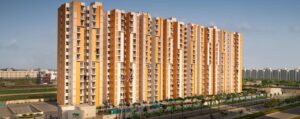Because of its affordability, practicality, and contemporary aesthetic appeal, flat roofing is becoming a more and more popular option for residential, commercial, and industrial properties. Flat roofs, as opposed to conventional sloped roofs, have a more streamlined design that optimizes usable space while offering dependable weather protection. To assist you in making an informed choice for your property, we will go over the advantages, components, upkeep, and frequently asked questions regarding flat roofing in this guide.
What is Flat Roofing?
Flat roofing refers to a roofing system with a nearly horizontal or low-slope surface, typically with a slope of less than 10 degrees. While the term “flat” suggests a completely level surface, flat roofs are designed with slight inclines to allow water drainage. These roofs are particularly popular in urban areas, where maximizing building space is crucial.
Benefits of Low-Cost Installation for Flat Roofing
Compared to sloped roofs, flat roofs are easier and quicker to install, which makes them a more affordable choice for homeowners. Their affordability is a result of the decreased demand for labor and materials.
Adaptable Use
Additional usable space that can be converted into terraces, rooftop gardens, or solar panel installations is offered by flat roofs. In urban areas where space is limited, this feature is especially beneficial.
Maintenance Simplicity
Compared to steeply pitched roofs, the flat design makes maintenance, repairs, and inspections easier and less hazardous.
Efficiency of Energy
Green roofing systems or reflective coatings can be applied to flat roofs to increase insulation and lower energy expenses. This keeps the interiors warmer in the winter and cooler in the summer.
Flat Roofing Materials
Choosing the right material is crucial for the longevity and performance of your flat roof. Common options include:
- EPDM (Ethylene Propylene Diene Monomer)
EPDM is a synthetic rubber material known for its durability, flexibility, and resistance to UV rays and weather conditions. It’s an excellent choice for both residential and commercial properties. - TPO (Thermoplastic Olefin)
TPO is a popular option for energy-efficient roofing. It reflects sunlight, reducing heat buildup, and offers excellent resistance to chemical and water damage. - Modified Bitumen
This material combines asphalt with modifiers for enhanced durability and flexibility. It is applied in layers and is ideal for properties exposed to heavy foot traffic. - PVC (Polyvinyl Chloride)
PVC roofing is lightweight, durable, and highly resistant to chemicals and fire. It’s also easy to install, making it a common choice for commercial applications. - Built-Up Roofing (BUR)
BUR is made of alternating layers of asphalt and reinforcing fabrics, topped with gravel. It’s a traditional flat roofing system known for its durability and resistance to heavy loads.
Maintenance Tips for Flat Roofs
Proper maintenance is essential to maximize the lifespan of your flat roof. Here are some tips:
- Regular Inspections
Schedule routine inspections, especially after severe weather, to identify and address potential issues like leaks, cracks, or pooling water. - Keep the Surface Clean
Remove debris such as leaves and branches to prevent clogging of drains and water pooling. - Check for Ponding Water
Flat roofs are prone to ponding water, which can lead to leaks and structural damage over time. Ensure the drainage system is functioning correctly. - Repair Damage Promptly
Address small issues like cracks or punctures immediately to prevent them from worsening and causing costly repairs. - Reapply Protective Coatings
Over time, protective coatings can wear down. Reapply them as needed to maintain energy efficiency and waterproofing.
When to Replace a Flat Roof
Despite regular maintenance, flat roofs will eventually need replacement. Signs that indicate it’s time to replace your roof include:
- Persistent leaks despite multiple repairs.
- Visible cracks, tears, or sagging areas.
- Signs of mold, mildew, or rot.
- Excessive ponding water that doesn’t drain properly.
Why Choose Professional Installation?
Flat roofing requires specialized knowledge and expertise to ensure proper installation and long-term durability. Professionals can:
- Assess your property’s specific needs to recommend the best materials and design.
- Ensure accurate installation for effective drainage and waterproofing.
- Provide warranties for materials and workmanship.
Short FAQ About Flat Roofing
1. How long does a flat roof last?
The lifespan of a flat roof depends on the material used. EPDM and TPO roofs can last 20–30 years with proper maintenance, while BUR systems may last 15–20 years.
2. Are flat roofs prone to leaks?
Flat roofs are more susceptible to leaks than sloped roofs due to water pooling. However, proper installation and maintenance can minimize this risk.
3. How often should a flat roof be inspected?
It’s recommended to inspect a flat roof at least twice a year, typically in spring and fall, and after major weather events.
4. Can flat roofs support heavy loads?
Yes, many flat roofs are designed to support additional weight, such as rooftop gardens or HVAC systems. Always consult a professional to ensure your roof’s load capacity.
5. Are flat roofs energy efficient?
Flat roofs can be highly energy-efficient when equipped with reflective coatings, insulation, or green roofing systems. These features help reduce energy costs and improve interior comfort.
Conclusion
For contemporary homes, flat roofing provides a useful, affordable, and adaptable option. Flat roofs provide all of the benefits you seek, including more usable space, increased energy efficiency, and a sleek appearance. You can guarantee your roof’s long-term performance and durability by selecting the appropriate materials, paying for expert installation, and performing routine maintenance. If you’re thinking about installing a flat roof on your property, speak with knowledgeable roofing experts who can help you navigate the process and offer the best options for your requirements.






